How Do Blackholes Form And How Do They Move ?
How do blackholes form and how do they move ?
More Posts from Primordialbitch and Others
Gamma-ray Bursts: Black Hole Birth Announcements
Gamma-ray bursts are the brightest, most violent explosions in the universe, but they can be surprisingly tricky to detect. Our eyes can’t see them because they are tuned to just a limited portion of the types of light that exist, but thanks to technology, we can even see the highest-energy form of light in the cosmos — gamma rays.
So how did we discover gamma-ray bursts?
Accidentally!

We didn’t actually develop gamma-ray detectors to peer at the universe — we were keeping an eye on our neighbors! During the Cold War, the United States and the former Soviet Union both signed the Nuclear Test Ban Treaty of 1963 that stated neither nation would test nuclear weapons in space. Just one week later, the US launched the first Vela satellite to ensure the treaty wasn’t being violated. What they saw instead were gamma-ray events happening out in the cosmos!

Things Going Bump in the Cosmos
Each of these gamma-ray events, dubbed “gamma-ray bursts” or GRBs, lasted such a short time that information was very difficult to gather. For decades their origins, locations and causes remained a cosmic mystery, but in recent years we’ve been able to figure out a lot about GRBs. They come in two flavors: short-duration (less than two seconds) and long-duration (two seconds or more). Short and long bursts seem to be caused by different cosmic events, but the end result is thought to be the birth of a black hole.

Short GRBs are created by binary neutron star mergers. Neutron stars are the superdense leftover cores of really massive stars that have gone supernova. When two of them crash together (long after they’ve gone supernova) the collision releases a spectacular amount of energy before producing a black hole. Astronomers suspect something similar may occur in a merger between a neutron star and an already-existing black hole.

Long GRBs account for most of the bursts we see and can be created when an extremely massive star goes supernova and launches jets of material at nearly the speed of light (though not every supernova will produce a GRB). They can last just a few seconds or several minutes, though some extremely long GRBs have been known to last for hours!

A Gamma-Ray Burst a Day Sends Waves of Light Our Way!
Our Fermi Gamma-ray Space Telescope detects a GRB nearly every day, but there are actually many more happening — we just can’t see them! In a GRB, the gamma rays are shot out in a narrow beam. We have to be lined up just right in order to detect them, because not all bursts are beamed toward us — when we see one it’s because we’re looking right down the barrel of the gamma-ray gun. Scientists estimate that there are at least 50 times more GRBs happening each day than we detect!

So what’s left after a GRB — just a solitary black hole? Since GRBs usually last only a matter of seconds, it’s very difficult to study them in-depth. Fortunately, each one leaves an afterglow that can last for hours or even years in extreme cases. Afterglows are created when the GRB jets run into material surrounding the star. Because that material slows the jets down, we see lower-energy light, like X-rays and radio waves, that can take a while to fade. Afterglows are so important in helping us understand more about GRBs that our Neil Gehrels Swift Observatory was specifically designed to study them!

Last fall, we had the opportunity to learn even more from a gamma-ray burst than usual! From 130 million light-years away, Fermi witnessed a pair of neutron stars collide, creating a spectacular short GRB. What made this burst extra special was the fact that ground-based gravitational wave detectors LIGO and Virgo caught the same event, linking light and gravitational waves to the same source for the first time ever!

For over 10 years now, Fermi has been exploring the gamma-ray universe. Thanks to Fermi, scientists are learning more about the fundamental physics of the cosmos, from dark matter to the nature of space-time and beyond. Discover more about how we’ll be celebrating Fermi’s achievements all year!
Make sure to follow us on Tumblr for your regular dose of space: http://nasa.tumblr.com
Faint starlight in Hubble images reveals distribution of dark matter
Astronomers using data from the NASA/ESA Hubble Space Telescope have employed a revolutionary method to detect dark matter in galaxy clusters. The method allows astronomers to “see” the distribution of dark matter more accurately than any other method used to date and it could possibly be used to explore the ultimate nature of dark matter. The results were published in the journal Monthly Notices of the Royal Astronomical Society.

In recent decades astronomers have tried to understand the true nature of the mysterious substance that makes up most of the matter in the Universe – dark matter – and to map its distribution in the Universe. Now two astronomers from Australia and Spain have used data from the Frontier Fields programme of the NASA/ESA Hubble Space Telescope to accurately study the distribution of dark matter.
Keep reading

Extinct tree grows anew from ancient jar of seeds unearthed by archaeologists
by Stephen Messenger
“For thousands of years, Judean date palm trees were one of the most recognizable and welcome sights for people living in the Middle East — widely cultivated throughout the region for their sweet fruit, and for the cool shade they offered from the blazing desert sun.
From its founding some 3,000 years ago, to the dawn of the Common Era, the trees became a staple crop in the Kingdom of Judea, even garnering several shout-outs in the Old Testament. Judean palm trees would come to serve as one of the kingdom’s chief symbols of good fortune; King David named his daughter, Tamar, after the plant’s name in Hebrew.
By the time the Roman Empire sought to usurp control of the kingdom in 70 AD, broad forests of these trees flourished as a staple crop to the Judean economy — a fact that made them a prime resource for the invading army to destroy. Sadly, around the year 500 AD, the once plentiful palm had been completely wiped out, driven to extinction for the sake of conquest.
In the centuries that followed, first-hand knowledge of the tree slipped from memory to legend. Up until recently, that is.
During excavations at the site of Herod the Great’s palace in Israel in the early 1960’s, archeologists unearthed a small stockpile of seeds stowed in a clay jar dating back 2,000 years. For the next four decades, the ancient seeds were kept in a drawer at Tel Aviv’s Bar-Ilan University. But then, in 2005, botanical researcher Elaine Solowey decided to plant one and see what, if anything, would sprout.
“I assumed the food in the seed would be no good after all that time. How could it be?“ said Solowey. She was soon proven wrong.
Amazingly, the multi-millennial seed did indeed sprout — producing a sapling no one had seen in centuries, becoming the oldest known tree seed to germinate.
Today, the living archeological treasure continues to grow and thrive; In 2011, it even produced its first flower — a heartening sign that the ancient survivor was eager to reproduce. It has been proposed that the tree be cross-bred with closely related palm types, but it would likely take years for it to begin producing any of its famed fruits. Meanwhile, Solowey is working to revive other age-old trees from their long dormancy.”
***Does anyone in the know have any comments?
(Source: Tree Hugger)
Ancient Bronze Age city reemerges from Iraq river after extreme drought

When an extreme drought caused a 3,400-year-old city to reemerge from a reservoir on the Tigris River in northern Iraq, archaeologists raced to excavate it before the water returned.
The Bronze Age city, at an archaeological site called Kemune, is a relic of the Mittani Empire (also spelled Mitanni Empire), an ancient kingdom that ruled parts of northern Mesopotamia from around 1500 B.C. to 1350 B.C. Researchers have long known of the remains of the city, but they can only investigate them during droughts.
Archaeologists partly excavated Kemune in 2018 and discovered a lost palace with 22-foot-high (7 meters) walls and chambers decorated in painted murals, Live Science previously reported. This time, researchers mapped most of the city, including an industrial complex and a multistory storage facility that likely held goods from all over the region, according to a statement released by the University of Tübingen in Germany. Read more.
Hubble fortuitously discovers a new galaxy in the cosmic neighborhood
Astronomers using the NASA/ESA Hubble Space Telescope to study some of the oldest and faintest stars in the globular cluster NGC 6752 have made an unexpected finding. They discovered a dwarf galaxy in our cosmic backyard, only 30 million light-years away. The finding is reported in the journal Monthly Notices of the Royal Astronomical Society: Letters.

An international team of astronomers recently used the NASA/ESA Hubble Space Telescope to study white dwarf stars within the globular cluster NGC 6752. The aim of their observations was to use these stars to measure the age of the globular cluster, but in the process they made an unexpected discovery.
Keep reading
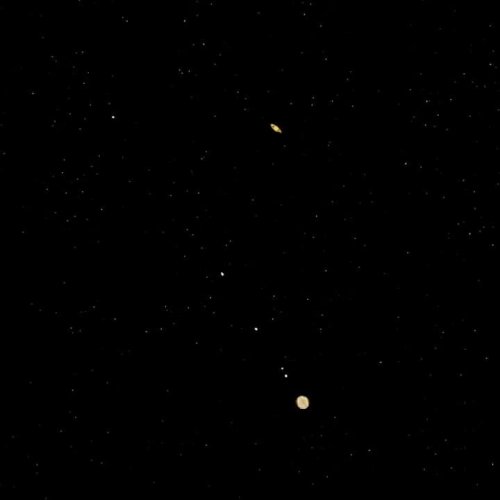
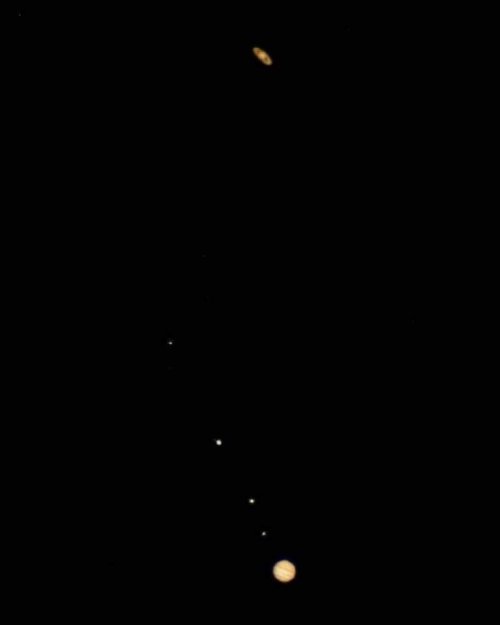
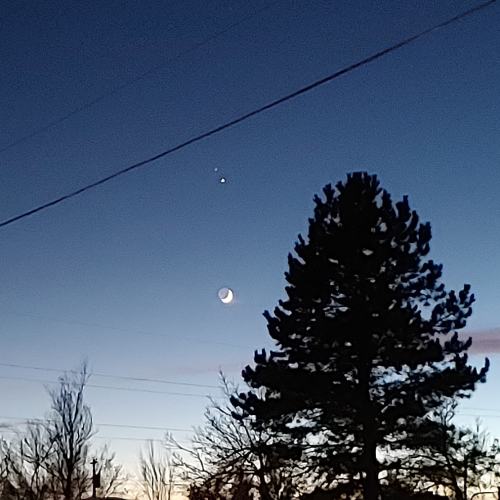
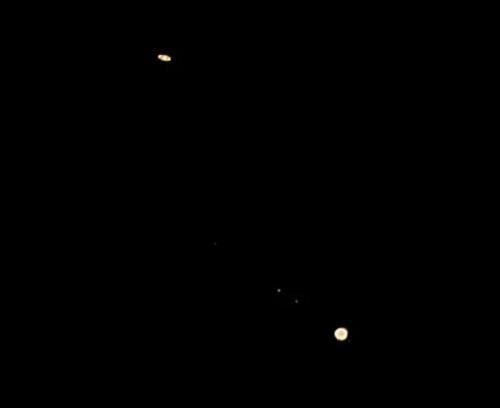
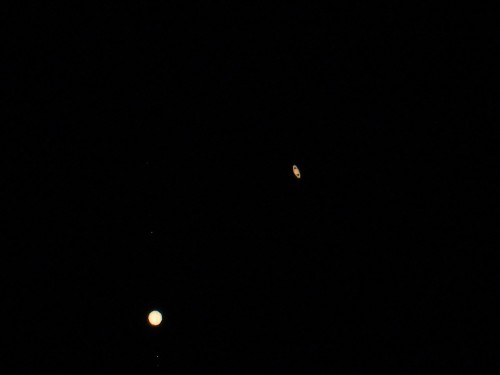
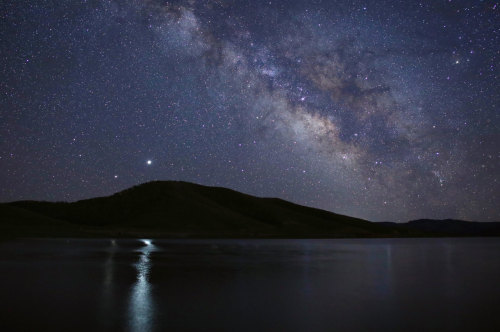
The Great Conjunction: Jupiter and Saturn 🌌.
An Earth-sized planet found in the habitable zone of a nearby star
by Ravi Kumar Kopparapu

An artist’s impression of an exoplanet in the habitable zone around a star. Credits: ESA/Hubble, M. Kornmesser
A few months ago a group of NASA exoplanet astronomers, who are in the business of discovering planets around other stars, called me into a secret meeting to tell me about a planet that had captured their interest. Because my expertise lies in modeling the climate of exoplanets, they asked me to figure out whether this new planet was habitable – a place where liquid water might exist.
Keep reading
Washington State University Physicists create 'negative mass'
Washington State University physicists have created a fluid with negative mass, which is exactly what it sounds like. Push it, and unlike every physical object in the world we know, it doesn’t accelerate in the direction it was pushed. It accelerates backwards.

The phenomenon is rarely created in laboratory conditions and can be used to explore some of the more challenging concepts of the cosmos, said Michael Forbes, a WSU assistant professor of physics and astronomy and an affiliate assistant professor at the University of Washington. The research appears today in the journal Physical Review Letters, where it is featured as an “Editor’s Suggestion.”
Hypothetically, matter can have negative mass in the same sense that an electric charge can be either negative or positive. People rarely think in these terms, and our everyday world sees only the positive aspects of Isaac Newton’s Second Law of Motion, in which a force is equal to the mass of an object times its acceleration, or F=ma. In other words, if you push an object, it will accelerate in the direction you’re pushing it. Mass will accelerate in the direction of the force.
Keep reading
Unveiling the Center of Our Milky Way Galaxy

We captured an extremely crisp infrared image of the center of our Milky Way galaxy. Spanning more than 600 light-years, this panorama reveals details within the dense swirls of gas and dust in high resolution, opening the door to future research into how massive stars are forming and what’s feeding the supermassive black hole at our galaxy’s core.

Among the features coming into focus are the jutting curves of the Arches Cluster containing the densest concentration of stars in our galaxy, as well as the Quintuplet Cluster with stars a million times brighter than our Sun. Our galaxy’s black hole takes shape with a glimpse of the fiery-looking ring of gas surrounding it.
The new view was made by the world’s largest airborne telescope, the Stratospheric Observatory for Infrared Astronomy, or SOFIA.
Make sure to follow us on Tumblr for your regular dose of space: http://nasa.tumblr.com.

-
 mariesrbouipochodian liked this · 1 year ago
mariesrbouipochodian liked this · 1 year ago -
 watch reblogged this · 1 year ago
watch reblogged this · 1 year ago -
 john-erby liked this · 3 years ago
john-erby liked this · 3 years ago -
 hotelpornography liked this · 3 years ago
hotelpornography liked this · 3 years ago -
 revolutionaryexistence liked this · 3 years ago
revolutionaryexistence liked this · 3 years ago
